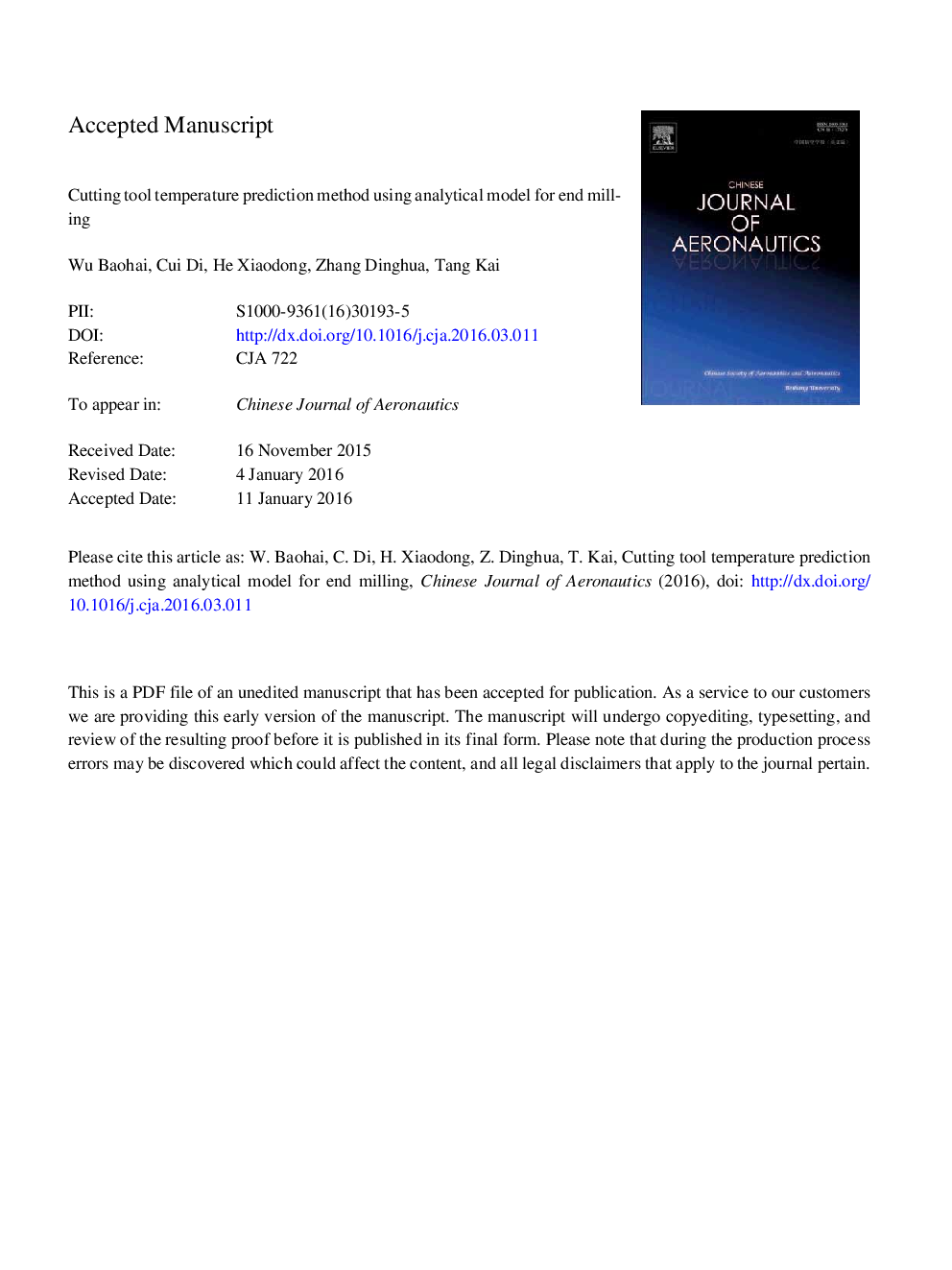| Article ID | Journal | Published Year | Pages | File Type |
|---|---|---|---|---|
| 7154294 | Chinese Journal of Aeronautics | 2016 | 13 Pages |
Abstract
Dramatic tool temperature variation in end milling can cause excessive tool wear and shorten its life, especially in machining of difficult-to-machine materials. In this study, a new analytical model-based method for the prediction of cutting tool temperature in end milling is presented. The cutting cycle is divided into temperature increase and decrease phases. For the temperature increase phase, a temperature prediction model considering real friction state between the chip and tool is proposed, and the heat flux and tool-chip contact length are then obtained through finite element simulation. In the temperature decrease phase, a temperature decrease model based on the one-dimension plate heat convection is proposed. A single wire thermocouple is employed to measure the tool temperature in the conducted milling experiments. Both of the theoretical and experimental results are obtained with cutting conditions of the cutting speed ranging from 60Â m/min to 100Â m/min, feed per tooth from 0.12Â mm/z to 0.20Â mm/z, and the radial and axial depth of cut respectively being 4Â mm and 0.5Â mm. The comparison results show high agreement between the physical cutting experiments and the proposed cutting tool temperature prediction method.
Related Topics
Physical Sciences and Engineering
Engineering
Aerospace Engineering
Authors
Wu Baohai, Cui Di, He Xiaodong, Zhang Dinghua, Tang Kai,
